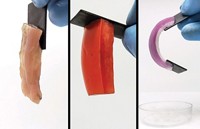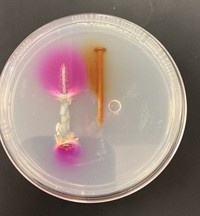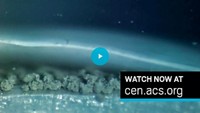Advertisement
Grab your lab coat. Let's get started
Welcome!
Welcome!
Create an account below to get 6 C&EN articles per month, receive newsletters and more - all free.
It seems this is your first time logging in online. Please enter the following information to continue.
As an ACS member you automatically get access to this site. All we need is few more details to create your reading experience.
Not you? Sign in with a different account.
Not you? Sign in with a different account.
ERROR 1
ERROR 1
ERROR 2
ERROR 2
ERROR 2
ERROR 2
ERROR 2
Password and Confirm password must match.
If you have an ACS member number, please enter it here so we can link this account to your membership. (optional)
ERROR 2
ACS values your privacy. By submitting your information, you are gaining access to C&EN and subscribing to our weekly newsletter. We use the information you provide to make your reading experience better, and we will never sell your data to third party members.
Education
Newscripts
Nonstick Salt, Electrochemistry Heroes, Fishy Athletes
by Stephen K. Ritter
January 18, 2016
| A version of this story appeared in
Volume 94, Issue 3
Nonstick Salt

One of the pleasures of being a chemist, or the next best thing, being the friend of a chemist, is that you discover and appreciate chemistry everywhere and in everything. Take for example University of Connecticut chemists Sarina J. Dorazio and Christian Brückner. They recently asked themselves: “Why is there cyanide in my table salt?”
They ran into that question when preparing a classroom exercise about how salt anticaking agents work (J. Chem. Educ. 2015, DOI:10.1021/ed500776b). Salt is hygroscopic, meaning it absorbs moisture from the air. As the outer layer of exposed NaCl crystals encounter water molecules, the crystals start to dissolve. When they dry back out, they fuse. Anticaking agents are added to salt to prevent this.
Some examples include calcium silicate, tricalcium phosphate, sodium bicarbonate, and rice flour. Check your salt box to see which one you have. You might just find, as Dorazio and Brückner did, yellow prussiate of soda (YPS), Na4[Fe(CN)6]·10H2O.
“Given the high toxicity of cyanide, the use of YPS as an approved food additive is puzzling at first,” the chemists say. Turns out the cyanide-containing anticaking agent is quite safe, given very little of it is actually in the salt and the cyanide is bound so tightly to iron in the ferrocyanide ion that it doesn’t have a chance to cause a problem.
So how do anticaking agents work? Some form a nonstick coating on salt crystals—think dusting flour on dough—and others bind water molecules. But YPS is a bit different, as Dorazio and Brückner explained by examining the details of surface X-ray diffraction studies carried out previously by other researchers. Those studies show that even a partial monolayer of Na4[Fe(CN)6] on salt crystals creates a mismatch of surface ionic charges that prevents the smooth restructuring of NaCl, thus keeping the crystals from fusing.
Electrochemistry Heroes

Another ray of chemistry recently appeared when the Electrochemical Society unveiled its first set of scientist trading cards. Like baseball cards, they feature a bio and career stats, but in this case for scientists who have worked on battery, fuel-cell, sensor, and electronics technologies—the movers and shakers who have changed and are changing how we function in the world. Sorry, there’s no bubble gum included.
Notable historic figures on the cards include Thomas Edison and Michael Faraday. Among contemporary scientists are Allen J. Bard (considered the father of modern electrochemistry) and Esther S. Takeuchi (who helped develop the battery system that powers implantable cardiac defibrillators). Newscripts now awaits the first set of trading cards for all types of chemists.
Fishy Athletes
When one considers the world’s greatest athletes, generally human examples such as Usain Bolt and Abby Wambach spring to mind. But Jodie L. Rummer of James Cook University and Colin J. Brauner of the University of British Columbia suggest that fish are the best athletes on the planet. It sounds fishy, but the creatures are 50 times as effective in releasing oxygen to their tissues as humans, which gives long-distance-swimming salmon or fast-swimming tuna an athletic edge over other vertebrates.
The secret is in their oxygen-transporting hemoglobin. Fish hemoglobin is designed to be more responsive to changes in pH than in other animals, enabling fish to adjust quickly to warm or cold water and water with varying oxygen levels. The researchers found all this out by monitoring real-time muscle oxygen levels in rainbow trout (PLOS One 2015, DOI: 10.1371/journal.pone.0139477).
Steve Ritter wrote this week’s column. Please send comments and suggestions to newscripts@acs.org.





Join the conversation
Contact the reporter
Submit a Letter to the Editor for publication
Engage with us on Twitter